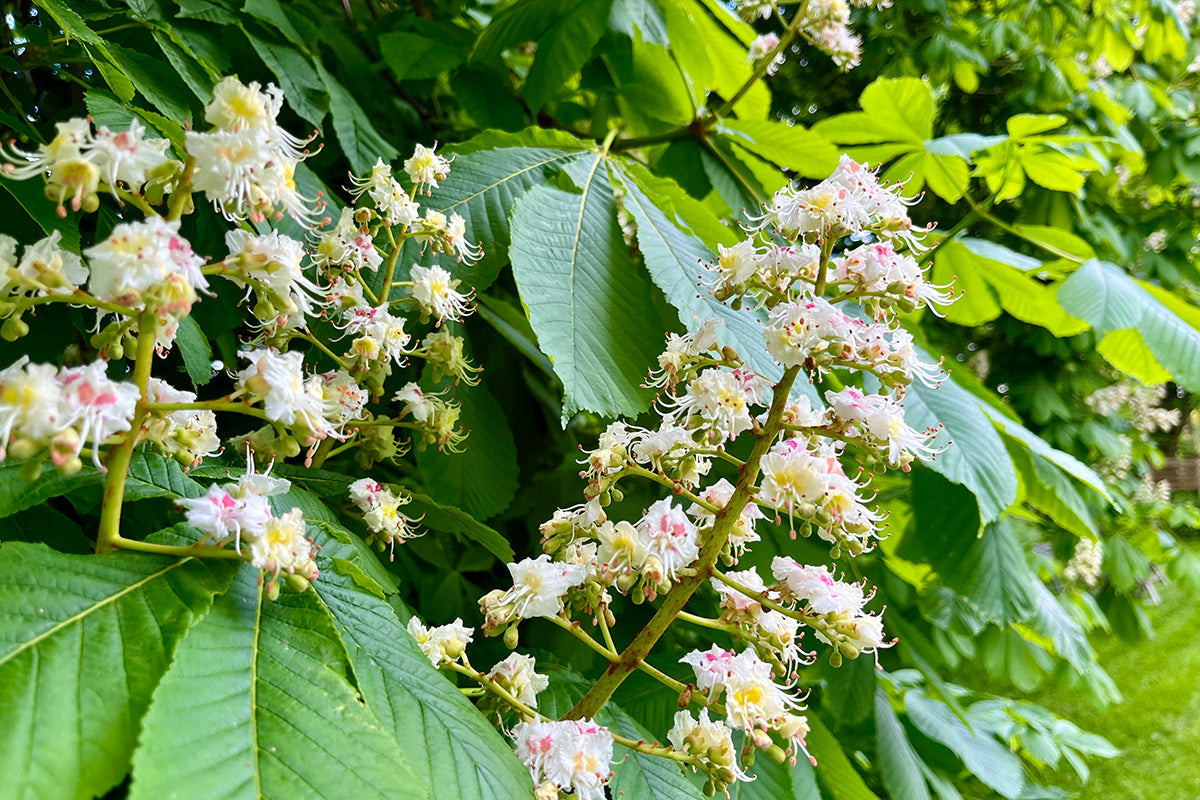Candles in the wind

We might not be celebrating a birthday but the candles are out at Genus HQ . Our magnificent Horse Chestnut trees are in flower - it’s something we look forward to every year. The erect white inflorescences with yellow and pink eyes stand out proudly from the branches hence their common name of horse chestnut candles.
Aesculus hippocastanum, its scientific name, is a classic parkland tree that lives for 300 years and attains a height of around 40 metres. Ours are mere teenagers in comparison at around 15 metres.
On the northern side of the garden at the end of the long shrub border, we have the smaller Aesculus x carnea or the red horse-chestnut, a hybrid between Aesculus hippocastanum and A. pavia. Several cultivars exist: ‘Briotii’ being the most common, and one with larger panicles of bright red flowers, ‘O’Neil’, shares its name with Genus founder Sue O’Neil.
Sadly, horse chestnuts are something we’ll see less and less of over the years and the traditional children's game of conkers is destined to slowly die out. Pest and disease stricken, many of these trees are falling or being removed with more disease-resistant alternatives used to replace them. Bleeding canker, leaf blotch, horse chestnut leaf miner moth, and chestnut leaf scale are just a few of the problems they face and in areas of public access and high footfall the difficult decision to remove them is often taken.
Originally a native to Greece and Albania the tree is now widely spread around the globe. Brought to England by John Tradescant the Elder (Gardener to Henrietta, wife of Charles I) in 1616, it soon spread to stately homes across the country. A critically endangered native population of 22 acres still exists in Bulgaria and is located within a nature reserve. Clinging on to both banks of the Dervishka river these trees, endemic to the region, are a remnant of what was once an extensive forest. It appears that, like the elm, the image of the horse chestnut will be something we look back on fondly as a major part of the British landscape. Lost but not forgotten.











